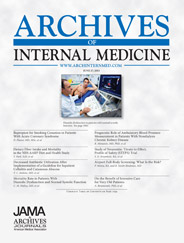 We have a bizarre tale to relate involving the journal Surgery News, which recently lost its editor-in-chief over a rather strange editorial he wrote in the February issue of the magazine.
We have a bizarre tale to relate involving the journal Surgery News, which recently lost its editor-in-chief over a rather strange editorial he wrote in the February issue of the magazine.
The ill-fated — and, we’ll stipulate, ill-advised — commentary has led to a de facto retraction of the entire publication — meaning that although no retraction notice exists that we’re aware of, neither does the issue exist in the publication’s archives.
But first, some important background. Surgery News is a trade magazine with a complicated structure. The publication, which describes itself as “the official newspaper of the American College of Surgeons [ACS],” is published by Elsevier, which supplies medical news through its International Medical News Group division. The society provides its own news, as well as the lead editor, a surgeon, who until recently was Lazar Greenfield. Greenfield, of the University of Michigan, also happens to be the president-elect of the ACS, twin responsibilities that put him at the pinnacle of influence for his specialty.
Now back to the offending editorial, which we’ll bring you in its entirety since 1) we think given the events that you should read the whole thing, and 2) because the ACS has taken the entire February issue off its website we can’t link to it even if we wanted to (more on that later). Under the heading “Gut Feelings,” Greenfield wrote (we added links): Continue reading Forget chocolate on Valentine’s Day, try semen, says Surgery News editor. Retraction, resignation follow
 Earlier this week we reported on the latest retraction of an article by Naoki Mori, number 21 in a series. We could have waited a few days and saved ourselves some trouble.
Earlier this week we reported on the latest retraction of an article by Naoki Mori, number 21 in a series. We could have waited a few days and saved ourselves some trouble.







